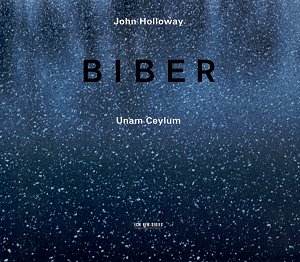Heinrich Ignaz Franz Biber was one of the seventeenth
century’s most individual composers for violin. He is well known for
his use of scordatura, a technique which involves retuning the violin
to achieve different sonorities and stops. His solo violin works (the
Mystery Sonatas) are notoriously difficult, because of this scordatura,
and he uses this technique in two of the sonatas on this recording.
This disc contains four sonatas from the 1681 collection
which made Biber famous, as well as two unpublished sonatas. They follow
different forms: some of them, such as the 4th and 6th, follow the partita
form, with an opening prelude, followed by a series of dance movements.
Others are in a more common sonata form. Yet not one of these sonatas
fits perfectly into either of these structures.
Partly, this is because Biber excels in variations
- the Aria and Variations, which appear in many of the sonatas, and
the passacaglias of the 6th and unpublished E major sonata. In fact,
each of these sonatas contains one such movement. These variations are
the heart of each sonata, offering such a wide range of musical material
and colour that they overshadow the remainders of the works. Biber’s
variations recall those of Buxtehude for harpsichord - seemingly simple
in melody, they nevertheless become complex in overall emotion and structure.
The instrumentation chosen for this recording, which
has been called "historically wrong" in regards to a previous
recording of works by Schmelzer, has depth and warmth, and if it is
historically incorrect it is aesthetically effective. The combination
of the incisive harpsichord and the rich organ give a unique sound to
support John Holloway’s excellent interpretations.
Holloway is an artist obsessed by Biber. I was fortunate
to hear him perform some of Biber’s works a few years ago, and attended
a pre-concert talk, when Holloway clearly showed just how much he loves
this composer’s music. His love for the music shines through on this
recording, making it one that I have listened to over and over since
I received it. The disc is close to perfection, in the quality of the
music, the performances, and the recording itself.
One can understand how this disc fits in ECM’s New
Series - the arias and variations that Biber composed, often over very
simple grounds, have a hint of the minimalism that flourished (in part
on ECM, with some of the first recordings by Steve Reich) in the 1970s.
This fine recording benefits from excellent performances,
and unique instrumentation, to present some seminal works by a composer
who deserves much more recognition than he has. Perhaps this nearly
perfect disc will help remedy this situation.
Kirk McElhearn


